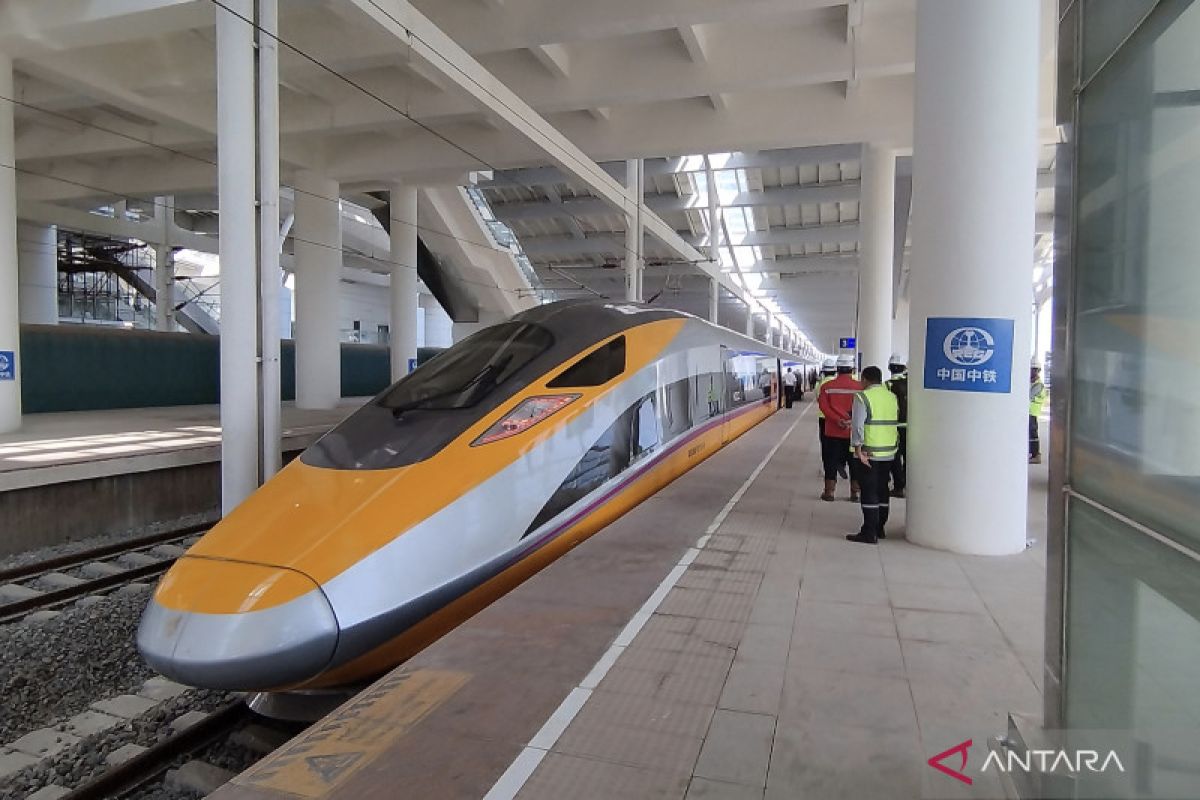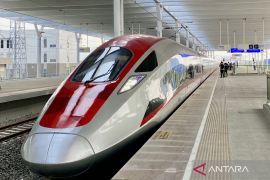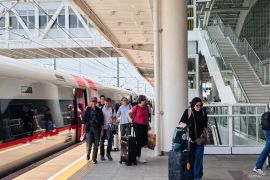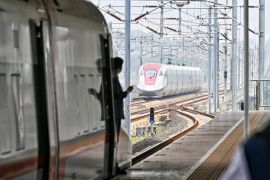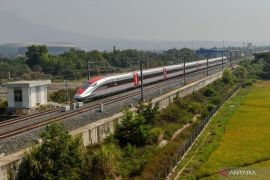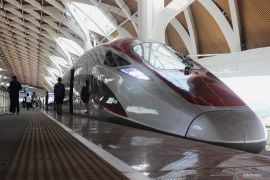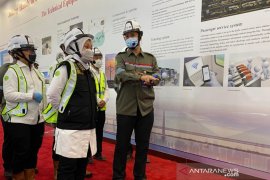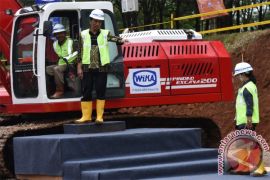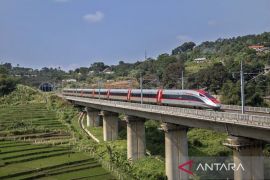In the early 19th century, Governor-General Herman Willem Daendels mobilized forced labor to develop the Great Post Road connecting Anyer in Banten to Panarukan in East Java, with the road connecting Jakarta (then Batavia) to Bandung being one of its sections.
Fast forward to the independence era, toll roads connecting Jakarta to Cikampek, and then from Cikampek to Padalarang and Bandung, were developed under successive leaderships from Suharto to Susilo Bambang Yudhoyono.
Now, after thousands of kilometers of toll roads have been developed nationwide under the leadership of President Joko Widodo (Jokowi), the government is developing the Jakarta-Bandung High-Speed Railway (KCJB) network to continue boosting connectivity between the two main cities on Java Island.
The project, developed in cooperation between Indonesia and China, through its operator PT Kereta Cepat Indonesia-China (KCIC), will conclude soon after its five-year construction.
The high-speed railway system puts Indonesia one step ahead of Southeast Asian countries as it is the first of its kind in the region.
Starting from May 2023, the railway system underwent a commissioning test, and the high-speed train carriage, including its inspection train, made round trips from Jakarta to Bandung on each testing day.
The testing speed has also gradually increased each day, from 80 kilometers per hour initially to over 350 kilometers per hour achieved this month, faster than the normal operation of the French TGV train that travels up to 320 kilometers per hour.
Content regarding the high-speed train test has also begun to flood social media platforms, reflecting the level of enthusiasm among residents for the new railway system and its operation.
In the first phase of its operation, the high-speed railway is planned to operate only from Halim Station in East Jakarta to Padalarang Station in West Bandung District, although the rail tracks have been developed until Tegalluar Station, southeast of Bandung City.
During a testing session on Thursday (June 22), Coordinating Minister of Maritime and Investment Affairs Luhut Binsar Pandjaitan, West Java Governor Ridwan Kamil, Transportation Minister Budi Karya Sumadi, and other officials had the opportunity to experience high-speed travel.
On the occasion, Pandjaitan stated that the high-speed train had achieved a maximum speed of 385 kilometers per hour, thereby reducing the travel time between Jakarta and Bandung to only 30 minutes. He also said that despite the high speed, the train traveled seamlessly.
PT KCIC stated that smooth high-speed travel is the result of fine adjustments made to detect and mend any issues in rail tracks.
Meanwhile, Governor Kamil said that travel from Jakarta to Bandung has become faster than ever through the operation of the high-speed train. He also highlighted that the train is very quiet during its journey.
"It feels like once you finish heeding nature's call, then leaving the toilet, you have arrived at Padalarang," he emphasized.
Making the distance between Bandung and Jakarta "closer than ever", the high-speed railway network is also supported by other public transportation systems, such as Jakarta's Light Rail Transit (LRT) and the Greater Bandung commuter railway.
President Jokowi is expected to inaugurate the high-speed railway system on August 18, a day after Indonesia's Independence Day, and after experiencing the travel during a testing session before June 28.
After its operation, the network is expected to make 68 trips daily, and each trip will have a capacity of up to 600 passengers.
The high-speed train will be free of charge for its passengers for the first 90 days, although the tickets will be limited. PT KCIC has not announced the official ticket price that will apply after the 90-day period ends.
Kamil expressed hope that with the free ticket, residents from all groups can experience the comfort and sophistication of high-speed railway technology.
"Those in villages, children, or those who want to go for a picnic, as long as you can win 'the free ticket war' ... you can experience the trip," the governor stated.
Moreover, Pandjaitan invited residents living in proximity to the project to experience high-speed train travel realized through bilateral cooperation between Indonesia and China.
Though the system is not 100 percent ready now, the government has already planned to expand the network on the grounds that Indonesia can develop the expansion independently by transferring technology and expertise through the KCJB project.
Meanwhile, some 400-600 Indonesian workers are currently in China to study train maintenance and operation.
The coordinating minister expects downstreaming in various related sectors to be realized to allow Indonesians to support the railway system with their might.
Moreover, Kamil said that the high-speed railway network would be expanded to East Java. After Jakarta-Bandung, the route will continue to Kertajati, Yogyakarta, and Surakarta, and end in Surabaya.
Despite inviting pros and cons, the project remains a breakthrough in Indonesia's transportation system, and only by seeing the final result can anyone determine whether the project has been successful, he stated.
"A new lesson requires sacrifice. Hence, I believe the next phase of the high-speed railway development will be much cheaper, faster, and more dynamic," Kamil remarked.
Related news: Minister says rail installation for KCJB project complete
Related news: KAI's investment in fast train, LRT is business breakthrough: DPR
Translator: Bagus Ahmad R, Nabil Ihsan
Editor: Anton Santoso
Copyright © ANTARA 2023
